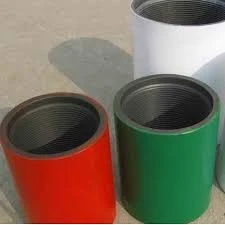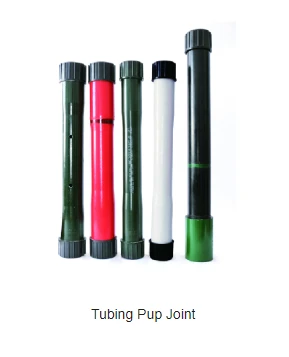Feb . 15, 2025 16:00
Back to list
what is the difference between casing and tubing?
In the oil and gas industry, distinguishing between casing and tubing is crucial for optimal well performance, safety, and cost-efficiency. Both are integral components in well drilling and production operations, but they serve markedly different purposes within the wellbore.
Contrastingly, tubing design focuses on facilitating flow and optimizing production rates. Material selection for tubing often gravitates towards corrosion-resistant alloys, especially when dealing with sour gas environments. Additional technologies, such as coiled tubing, have revolutionized interventions and efficiencies as they allow operations like cleaning, logging, and fracturing to be performed without having to remove the entire string from the well. The expertise inherent in managing both casing and tubing systems extends beyond initial selection and installation. It spans the lifecycle of the well, encompassing monitoring, maintenance, and replacement. Expert operators ensure that the high-pressure and high-temperature ratings are continually met, requiring constant vigilance to detect and mitigate any signs of wear or failure. In terms of authoritativeness and trustworthiness, one must rely on certified engineering standards and guidelines such as those from the American Petroleum Institute (API) or the International Organization for Standardization (ISO). These entities set forth stringent requirements and specifications that guide the design, manufacturing, testing, and usage of casing and tubing, ensuring sound engineering practices and the highest levels of safety. Meanwhile, operators gain real-world experience through direct involvement in drilling and production projects. Experience brings nuanced understandings, such as knowing how environmental factors impact casing corrosion rates or how production techniques affect tubing wear. The cumulative knowledge derived from handling diverse wells with varying pressure regimes, formation types, and operational challenges enriches decision-making for future projects. Ultimately, the differentiation between casing and tubing lies in their fundamental roles within the well architecture—the casing is about fortification and isolation, while tubing is vital for flow and extraction. Mastery in understanding and managing these components strengthens well productivity, extends operational lifetimes, and upholds safety and environmental stewardship within the oil and gas industry.


Contrastingly, tubing design focuses on facilitating flow and optimizing production rates. Material selection for tubing often gravitates towards corrosion-resistant alloys, especially when dealing with sour gas environments. Additional technologies, such as coiled tubing, have revolutionized interventions and efficiencies as they allow operations like cleaning, logging, and fracturing to be performed without having to remove the entire string from the well. The expertise inherent in managing both casing and tubing systems extends beyond initial selection and installation. It spans the lifecycle of the well, encompassing monitoring, maintenance, and replacement. Expert operators ensure that the high-pressure and high-temperature ratings are continually met, requiring constant vigilance to detect and mitigate any signs of wear or failure. In terms of authoritativeness and trustworthiness, one must rely on certified engineering standards and guidelines such as those from the American Petroleum Institute (API) or the International Organization for Standardization (ISO). These entities set forth stringent requirements and specifications that guide the design, manufacturing, testing, and usage of casing and tubing, ensuring sound engineering practices and the highest levels of safety. Meanwhile, operators gain real-world experience through direct involvement in drilling and production projects. Experience brings nuanced understandings, such as knowing how environmental factors impact casing corrosion rates or how production techniques affect tubing wear. The cumulative knowledge derived from handling diverse wells with varying pressure regimes, formation types, and operational challenges enriches decision-making for future projects. Ultimately, the differentiation between casing and tubing lies in their fundamental roles within the well architecture—the casing is about fortification and isolation, while tubing is vital for flow and extraction. Mastery in understanding and managing these components strengthens well productivity, extends operational lifetimes, and upholds safety and environmental stewardship within the oil and gas industry.
Latest news
-
Tubing Crossover - API Compatible, Custom Sizes, In StockNewsNov.10,2025
-
Tubing Coupling | High-Strength, Leak-Proof Steel CouplingsNewsNov.10,2025
-
Wholesale API Threading Casing Coupling | API 5CT, Fast ShipNewsNov.10,2025
-
Pup Joint Supplier | API Certified, Custom, Quick ShipNewsNov.10,2025
-
Pup Joint Manufacturers | Precision Machined, Fast DeliveryNewsNov.10,2025
-
Tubing Coupling | Precision Steel, Leak-Proof, Fast DeliveryNewsNov.03,2025
Related Products







